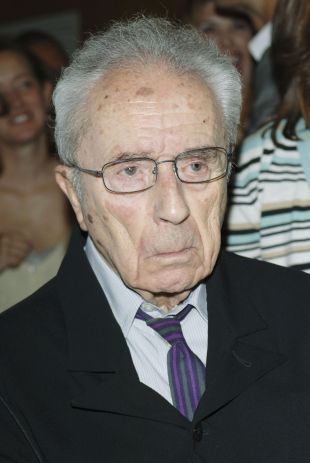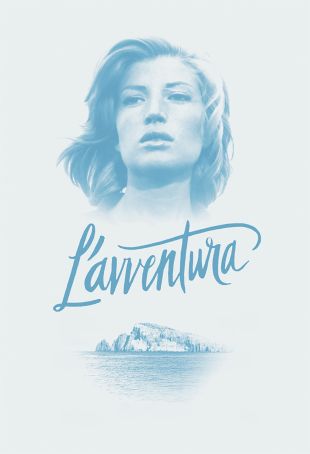Italian filmmaker Michelangelo Antonioni redefined the concept of narrative cinema, challenging the accepted notions at the heart of storytelling, realism, drama, and the world at large; his films -- a seminal body of enigmatic and intricate mood pieces -- rejected action in favor of contemplation, championing image and design over character and story. Haunted by a sense of instability and impermanence, his work defined a cinema of possibilities; in Antonioni's world, riddles were not answered, but simply evaporated into other riddles.
Antonioni was born on September 29, 1912, in Ferrara, Italy; as a child, his interests included painting and building architectural models. After graduating high school, he attended the University of Bologna. While he was at college, his interest in the theater blossomed, and he also began writing short fiction and film reviews for a local newspaper, Il Corriere Padano, often running afoul of the motion-picture community for his savage attacks on the mainstream Italian comedies of the 1930s. Antonioni's initial attempt at filmmaking was a documentary profiling a nearby insane asylum; the project was aborted because the inmates would lapse into fits of panic each time the lights of the camera were turned on.
By 1939, Antonioni had chosen the cinema as his life's work, and relocated to Rome, where he accepted a position at Cinema, the official Fascist film magazine edited by Mussolini's son, Vittorio. After being dismissed over a political disagreement, Antonioni enrolled at the Centre Sperimentale to study film technique. By age 30, he was working professionally in the film industry; his first screenplay went unproduced, but he was soon hired to co-write Roberto Rossellini's Un Pilota Ritorna, followed by a stint as the assistant director to Enrico Fulchignoni on I Due Foscari. In 1942, Antonioni traveled to France to work with Marcel Carné on Les Visiteurs du Soir. Antonioni was soon called back to Italy for military service, where he managed to wrangle funding from the Luce Institute for Gente del Po, a documentary portrait of the impoverished lives of the fishermen along the Po River.
The Allied invasion of Italy brought film production there to an end for some time, forcing Antonioni to earn his living as a book translator. Additionally, he was commissioned by Luchino Visconti to write a pair of screenplays, Furore and The Trial of Maria Tarnowska, neither of which was ever produced. In 1948, Antonioni was able to return behind the camera, and over the course of the next two years he directed no less than six documentary shorts; among them, Nettezza Urbana, L'Amorosa Menzogna, and Superstizione hinted most strongly at the work still to come.
After completing the short subject La Villa dei Mostri, Antonioni was able to secure financing for his 1950 feature debut, Cronaca di un Amore. He turned away from neo-realism, employing professional actors and focusing on interpersonal relationships instead of social criticism. The film further developed his increasingly unique visual aesthetic, honing a rigorously disciplined brand of "anti-cinema," favoring long, deep-focus shots in opposition not only to the gritty, newsreel-like feel of the neo-realists but even the montage dynamic perfected by Sergei Eisenstein. With Cronaca di un Amore, Antonioni first moved into a realm of film previously explored only by the likes of Carl Dreyer and Robert Bresson, a form of interior cinema concerned far less with the body than with the soul, and less by the actual arc of his plot than by the characters' reactions to it.
In 1952, he collaborated with Federico Fellini on the script to Lo Sceicco Bianco, followed by a directing assignment helming an episode of the triptych I Vinti. Antonioni did not mount another feature-length project until 1953 with La Signora Senza Camelie. The film received virtually no notice, and was barely even screened outside of Italy; Antonioni spent the next several years in relative seclusion, directing only a segment of L'Amore in Città as well as Uomini in Piú, a documentary commissioned by an international committee studying overpopulation.
In 1955 he was able to mount his third feature, Le Amiche. Though beset by troubles from the outset, the completed film was Antonioni's most mature to date. Based loosely on the Cesare Pavese novella Tra Donne Sole, it further rejected all notions of traditional narrative and literary value, even garnering some degree of attention from the international cinema community. Il Grido followed in 1957, and in 1958 Antonioni resurfaced with a pair of films, La Tempesta and Nel Segno di Roma. The period was one largely defined by artistic and commercial disappointment, and of the three films, the director allowed his name to remain on Il Grido alone.
In 1960, Antonioni's masterpiece L'Avventura premiered at the Cannes Film Festival. His most extreme work to date, as a study of alienation among the bourgeoisie, it progressed at a snail's pace, its long, beautiful shots telling virtually no story whatsoever. Even the basic plot -- the search for a missing woman -- willfully disintegrated at the end, prompting a near-riot among Cannes viewers. Ultimately, L'Avventura won the festival's Grand Jury Prize, becoming a phenomenal success across the globe. Antonioni became a major figure in international cinema virtually overnight, and his lead actress, Monica Vitti emerged as a huge star.
La Notte -- the second film in the trilogy begun with L'Avventura -- appeared in 1961, exploring the existential ground of alienation, non-communication, and meaninglessness. A transitional work also starring Vitti as well as Marcello Mastroianni and Jeanne Moreau, La Notte experimented with editing techniques, relying less on the long, expansive takes which defined Antonioni's earlier work. The 1962 release L'Eclisse reduced its plot structure to the barest minimum, replacing narrative with an acute psychological portrait of a woman (Vitti) who drifts from one romantic liaison into another. Il Deserto Rosso, his fourth and final film starring Vitti followed in 1964.
In 1966, Antonioni went to England to shoot Blow-Up, his most commercially successful effort. Set in the "Swinging London" scene of the mid-'60s, it starred David Hemmings as a fashion photographer who accidentally photographs a murder. The wide popularity of Blow-Up brought Antonioni to America, where in 1970 he made his lone U.S. feature, Zabriskie Point. Chung Kuo/Cina, a four-hour television documentary filmed in China and subsequently denounced by the nation's government, followed in 1972. The Passenger, a thriller shot in North Africa starring Jack Nicholson, appeared three years later, while Il Mistero di Oberwald did not bow until 1980.
With 1982's Identificazione di una Donna, Antonioni's career largely ground to a halt; a savage early review by New York Times critic Vincent Canby prompted the film's U.S. distributor to drop the film, and due to the loss of potential revenue, Antonioni was unable to realize several planned projects. A 1985 stroke left him partially paralyzed and unable to speak, but a decade later Antonioni returned to filmmaking with Par-Dela les Nuages (Beyond the Clouds), a feature co-directed by Wim Wenders.
In 2004, at the age of 91, he involved himself with two new projects. The first film, Michelangelo Eye to Eye was a 35-minute documentary, while Eros featured multiple segments directed by such auteurs as Antonioni, Steven Soderbergh, and Wong Kar-Wai. In 1995, Antonioni received an honorary Lifetime Achievement Academy Award. He passed away at the age of 94 on July 30, 2007, in Rome.



